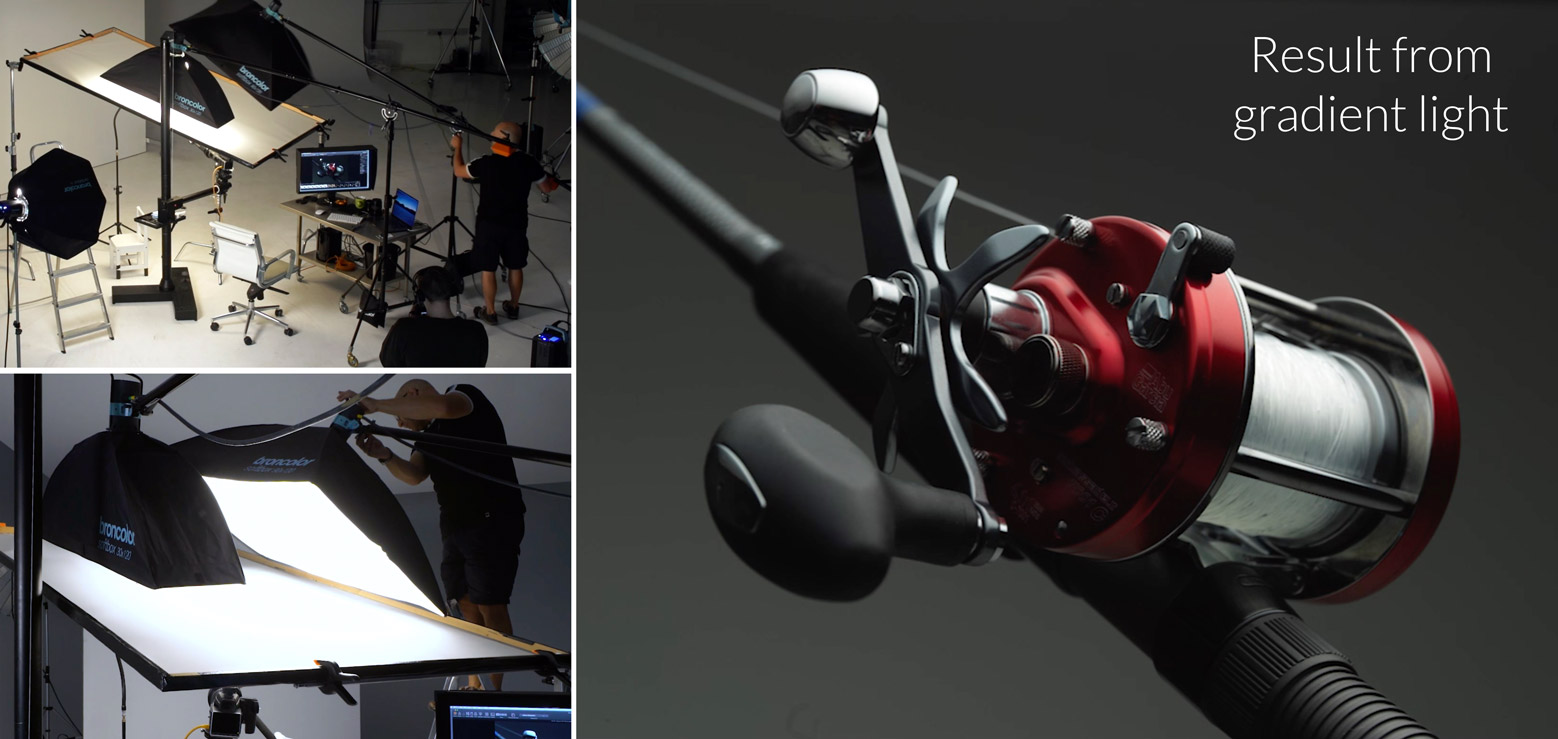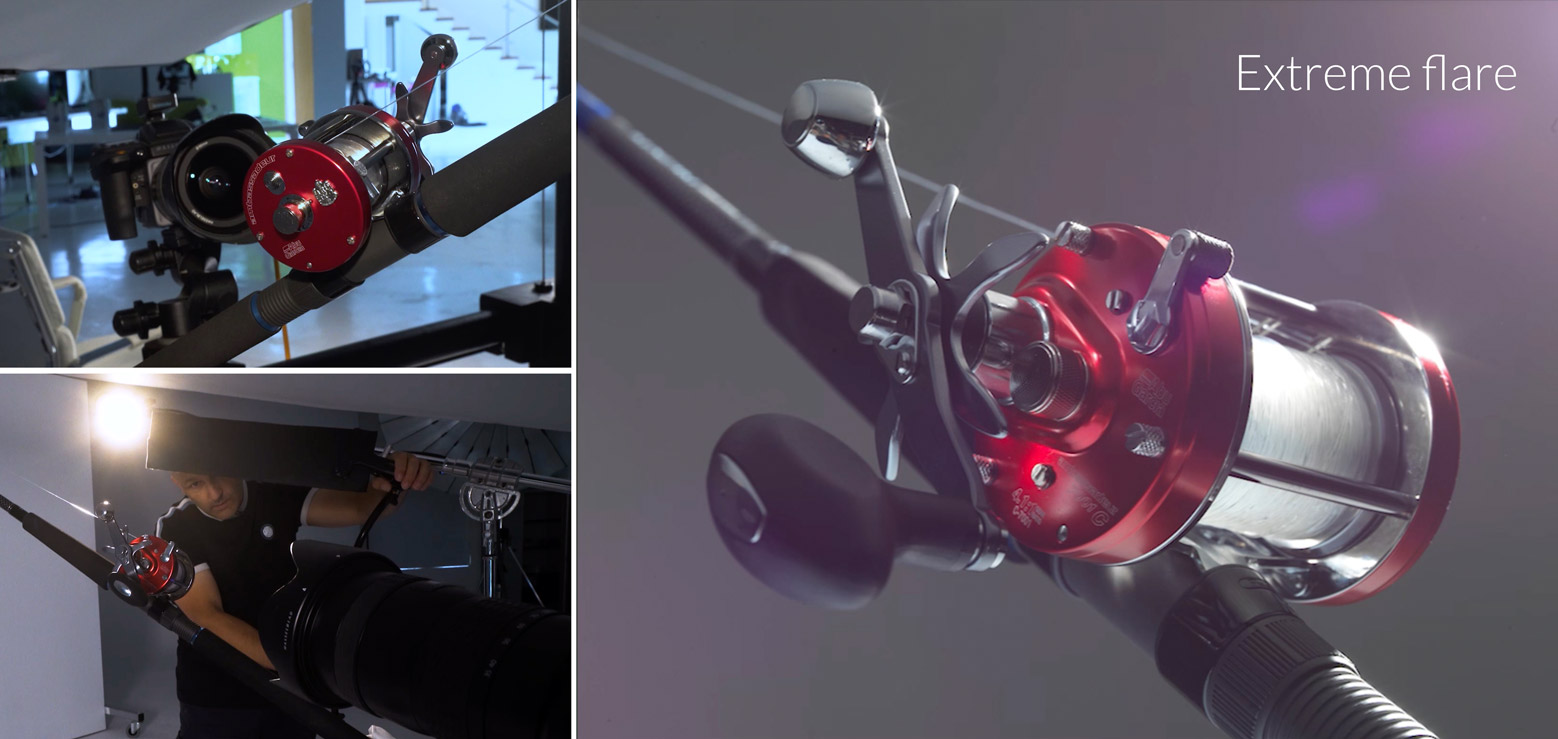Fishing Reel Photoshoot
Multiple metallic surfaces make for a masterclass in lighting control.
For this class, Karl undertook one of the most challenging shoots of his career — photographing an Abu Garcia fishing reel.
Key to the shot was controlling highlights on the metallic surfaces of the product, lighting key areas of the reel and achieving sufficient depth of field. You’ll watch see how Karl tackled all of these challenges and more through careful control of light, patience and experimentation.
In this class:
- How to photograph metallic products
- Techniques for creating gradient lighting
- How to light small details using specialist lighting modifiers and mirrors
- Flare and how to reduce it
- Controlling light bounce in a studio
- How to achieve greater depth of field using focus stacking
If you enjoyed this class, check out Cycling Photography: Specialized Racing Bike Shoot and Zenith Watch Product Shoot.
If you have any questions about this class, please post in the comment section below.
When it comes to product photography, understanding your product and the key features is paramount. As a keen fisherman, I knew what was important to show on this particular product, but lighting each of the elements would prove to be no small task.
With a highly reflective product such as this, it goes without saying that gradient lighting would form part of the setup. For this shoot, that’s where I started before moving on to lighting details such as the logo on the side of the product.
As I progressed through the shoot, flare and light bounce proved to be two major challenges. This was caused by two main factors — lights shining into the lens, and light reflecting off the metal of the product and bouncing into the lens — and this was something that I had to address a few times throughout the shoot.
I spent the majority of this shoot lighting and refining the lighting on the product, before finishing with the background light and focus stack. To fully capture all of the details on the product, this was the only way I was able to get sufficient depth of field.
By working methodically and addressing each ‘problem’ as I went, I was able to reach an end result that I was happy with.





Comments
Karl, ignore my previous comment I just realized that it’s the ambassador 7001C so you don’t need to respond to it. I don’t know how to delete a comment I just posted –
This shot is out of this world ; from your entire work it’s one of my favorite product shot you did. I saw this video a while ago and watch it again over and over to learn more ; I might be crazy because I’d like to redo the exact same shot to see if I can do it, I know how technical it is, can you confirm this is the Abu Garcia Ambassador 7000 rod combo please?
I am not a fisherman but might buy it to shoot and over the weekend and return it on Monday :)))
Hi, the reel is the Abu Ambassador 7001 C – the left handed one. I’m not sure what the Rod was as I’ve got a few and I don’t know which one I used. I think it was a Kensaki boat rod 15-20lb?
How many hours was the total duration of this shoot?
After the shoot how many hours did you spent retouching?
Hi, the difficulty is I have to estimate how long the shoot would have been because there is a big difference between the shoot time if I’m also presenting and explaining everything that I’m doing compared to not having a film crew and just getting on with the shoot. My experience having done this many times is that a shoot takes me half the time if I’m not presenting. On that basis I could have wrapped this shoot up in 2-3 hours but you also have to keep in mind experience and how quickly you can find the solutions. The post production on this was fairly simple as it was just bringing in a few different layers from the same shoot and blending them together, then a bit of B&D work so if I remember correctly no more than a couple of hours.
5min 17s which extension tube did you use?
7min 10s on the left which brand and model of C stand did you use, I like the blue handles on them?
1h17min 25s
You use a reflector card, since its not a flash but reflecting light around ; shouldn’t it be completely under exposed? Like ambiant light would be underexposed since you use fast flash speed.
Hi, 5m 17s Hasselblad do a set of three extension tubes, this was the thinnest one. 7m 10s independent brand from Essential Photo in the UK. 1h 17min 25s it is flash, it’s all flash? The modelling lights let me see what the flash will look like when I’m looking through the camera holding the reflector and then we take the picture and all the flashes fire.
Thanks a lot for your answers, it is unfathomable how much I learned already and how thankful I am to you and your team.
I am watching all your videos everyday and its the same as being next to you in studio, priceless ! !!
Great to hear thanks!
– In this video what brand and model of C stands did you use?
– Which extension tube did you use out of the three H?
– When I watched the video I didn’t pay attention but you did use I think cards or reflectors, mirrors, now since you use a high speed flash over 250/s to kill ambient light ; how does the reflecting cards does it’s job at all since reflecting light is much weaker than a flash?
Hi, if you could please note the time in the video when you have questions relating to specific details as I’m afraid I’m unable to watch the whole video to check. If you come back to me with the times in the video I will respond.
What software does Karl uses for focus stacking ; why don’t he uses light room?
Hi, I use Helicon.
Wonderful session, learned a lot in this one combining a lot of lessons from other courses.
Wondering if the water reflection would be mimiced nicely by using a bounce card from beneath with scrambled aluminium foil on it. So instead of shooting through the acrylic a light would shoot down on the bounce card. r maybe some wrinkly tracing paper on the acrylic?! Maybe it would also be too busy. Not sure, didn’t test, just a thought.
Additionally I realized that not all focus stacks made it into the final image – the rod fades out.
I guess it would be predefined with a client in the brief. Even if so, would it be a good move to show both versions to the client?
Hi, no not necessarily sometimes you can present too much and the client can then get confused. It’s better to deliver what the art director wanted unless you feel strongly and discussed first that an alternative would be better. I decided that this was the DOF I wanted so there wasn’t really a need for me to do another.
Hi, thanks for your thoughts and experience on this. Will keep it in mind and discipline myself. Sometimes you get carried away and ignore the clients position. Making a bad impression even with a great result would be a terrible situation.
Hi, yes and that’s a good way of thinking, anything that can replicate a real world scenario will give more believable results.
Karl,
Your attention to detail is a refreshing delight to watch.
Big respect sir.
Happy New Year.
Cheers